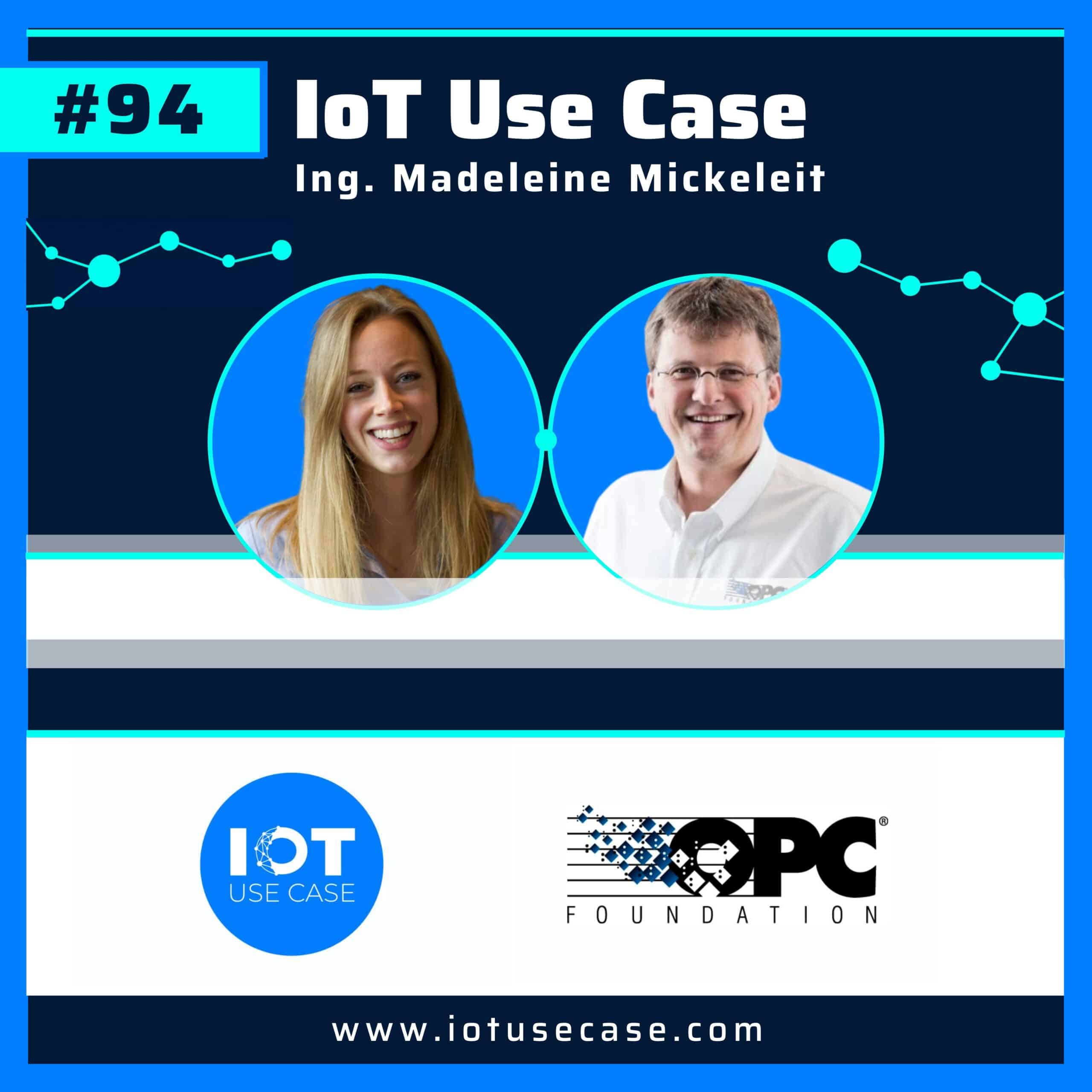Miele is the world’s leading supplier of premium domestic appliances. These include the product segments cooking, baking, steam cooking, refrigeration and freezing, coffee preparation, dishwashing, laundry and floorcare. In addition, there are dishwashers, washing machines and tumble dryers for commercial use, as well as cleaning, disinfection and sterilization equipment for medical facilities and laboratories.
Founded in 1899, the company operates eight production sites in Germany and one plant each in Austria, the Czech Republic, Poland, Romania and China. Sales in the financial year 2020 amounted to around EUR 4.5 billion. Miele is represented in almost 100 countries by ist own sales subsidiaries or through importers. The fourthgeneration family run company employs around 21,000 people worldwide. The company’s headquarters are in Gütersloh, Westphalia, Germany.
Benefits of OPC UA
“In simple terms, the conversion to OPC UA is the modernization of data communication according to the latest findings.”
CHRISTIAN STICKLING, Information Technology in Appliance, Miele, at the OPC UA Foundation Press Conference in 2018 (SPS Nuremberg).
Why does Miele's BU Laundry rely on Production Communication with OPC UA?
“OPC UA is the communication protocol for Industry 4.0 with cross-manufacturer and cross-platform use. The communication standard is based on a uniform and encryptable data model to ensure secure communication. Required transformers can be integrated into existing systems in an easy manner, without the need of timeconsuming programming from the client. OPC UA has the crucial advantage that communication follows a uniform format and is robust and secure with the use of OPC UA interfaces,” says Christian Stickling, Information Technology in Appliance, Miele, summarizing the main features.
Can existing Systems be upgraded to OPC UA?
“The uniform interfaces can be used for different systems. This is a great advantage for an existing production. As a result: the time required for adaptations or the integration of devices and systems is significantly reduced. The effort of communication technology in complex 4.0 manufacturing processes is reduced as well. Further advantages are in the use of virtual hardware. The “hardware in the loop” principle already checks processes during the construction and planning phase. Furthermore, a major advantage is that 100 percent of Miele’s suppliers now supply OPC UA-compliant products with OPC UA interfaces in machines and controllers.”
Keyword 'data security'?
“The high security level of OPC UA is a main factor for Miele. Communication with OPC UA works according to the principle “secure by default”. All data is encrypted and transmitted securely. Under these security standards, the BU Laundry’s assets and production data are transferred to Microsoft’s Azure Cloud.”
OPC UA at the press shop
Manufacturing Washing Machine Aggregates with OPC UA
In May 2017, the first working group began operations with the objective of reviewing the OPC UA standard. In November 2017, the company officially joined the OPC Foundation. In 2018, Miele decided to rely on OPC UA in the press shop and body shop for the production of washing machines. Sheet steel components are produced at the Gütersloh press shop. In subsequent production steps, these individual parts are assembled into a washing machine unit and washing machine housing in the body shop. This requires welding processes, clinching processes or even bolting processes. In the final assembly, the washing unit, washing machine housing, and other individual parts are combined to form the finished washing machine.
The goal of the OPC UA integration was to modernize and simplify data communication in the press shop and in body-in-white production. Since 2018, the utilization of OPC UA for production communication has continuously increased in the BU Laundry. Today, OPC UA standards are also implemented when existing plants are remodeled, wherever possible. New plants are already equipped with OPC UA at the factory. Only in rare exceptional cases can OPC UA not be implemented, for example when purchased equipment is delivered with proprietary systems. In this case, a change would result in a breach of warranty.
“The development of the washing machines, the production of the components and the final assembly take place almost entirely in-house. The vertical range of manufacture at Miele is enormous. This gives us a firm grip on quality.”
MARKUS FRIELINGHAUS, Miele, Head of Press Shop, Gütersloh
Production of approx. 860,000 Washing Machines per Year
Compared to the rest of the industry, Miele achieves a very high level of vertical integration. The company can therefore comprehensively influence the quality of its products and increase product safety. Miele washing machines are tested to last 20 years. For the fourth year in a row, washing machines from Miele are also series winners of the 2021 Stiftung Warentest.
A tight Schedule
The Gütersloh site was built in 1907 and is now Miele’s headquarters as well as the competence center for laundry care. Here, Miele develops and produces washing machines and washer-dryers. Additionally, the company manufactures pressings, cast-iron components and enameled casing sections for other Miele plants, as well as product and process development for Miele’s Uničov (Czech Republic) and Ksawerów (Poland) plants. The development and production of electronic components for nearly all Miele appliances also takes place in Gütersloh.
Conversion to OPC UA in just Three Weeks
The integration of the new communication level could only take place during the three-week plant vacation period, which means that the individual test series had to take place under real conditions of the running press plant in Gütersloh. It was therefore necessary to stay within an extremely tight schedule and coordinate with the press shop. The conversion itself took place during ongoing operations. Within three weeks, the old system had to be dismantled, the new communication levels, including the OPC UA interfaces, had to be integrated, and the upgrade of the existing machinery with adapters had to be completed and tested. The connection of the control station also took place during the company vacation period. The control station ensures optimal control strategies by, for example, linking the status of the systems and machine availability with statistical data and generating analyses from it.
Plan B for Emergencies
Failure would have resulted in immense licensing costs for the previous software, as well as rebuilding and redundancies. There was a plan B, but no going back. “When production started without errors on Monday morning after the plant vacation period, we knew every stage of production had been successfully converted to the OPC UA communication standard. We had good experiences with OPC UA, a concept for the conversion, and were very sure that we could accomplish it in three weeks,” explains Christian Stickling in retrospect.
“However, being very sure doesn’t mean being completely sure. The OPC UA integration was an immense challenge, because a press plant, unlike a laboratory experiment, cannot simply be converted. It was a wonderful moment when everything worked and we achieved improvements with the successful conversion to OPC UA. We now have a simpler and more future-proof operation of production-related communications and achieved monetary savings by not having to purchase licenses for special software. This also results in faster troubleshooting and ensures a smooth operation of the plant.”
In Miele’s washing machine production – here the belt end test – numerous production scenarios can be tested with the data transmitted via OPC UA in the material flow simulator. The real data from the factory provides the basis for optimising production.
1. Production Data Communication
In the first step, the production plan data from SAP was linked to the actual data from the plants. This included, for example, setup times and setup costs, data on plant capacities and work shifts, and material numbers. For this purpose, data format standards were defined and interfaces integrated so that the data could be accessed via OPC UA.
Through the use of OPC UA, data can now not only be generated, processed or evaluated, but also transferred to other systems in any form and without additional effort.
2. Material Flow Simulator
A material flow simulator uses OPC UA interfaces to retrieve live data from the data sources. Production signals, for example from the press shop, are transferred to the material flow simulator in a matter of seconds. The actual data of the plant status is recorded and visualized in the material flow simulator. The main advantage is that the plants are already mapped in virtual 3D models in the material flow simulator and only need to be enriched with actual data in order to turn the simulation models into digital twins.
“Our goal is to use simulation not only for strategic planning analyses, but also in the long term to support operations. To this end, the models are to be initialized with the ‘actual and live state’ of current production. Predictions can then be determined from this state.”
Jan Brinkjans, Miele, Production Engineering, Business Unit Laundry
Text taken over from original – OPC Foundation







